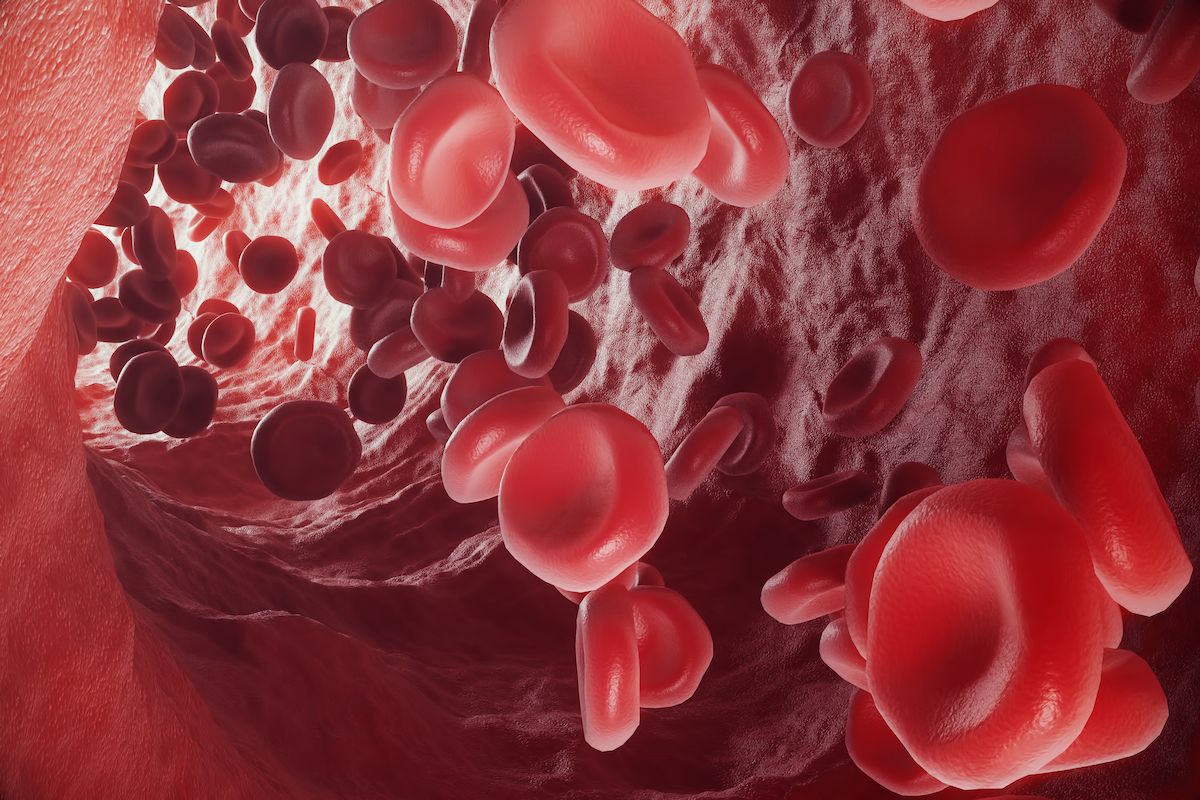Daratumumab Combo Prolonged Efficacy in Asian Patients with Multiple Myeloma
The safety profile of daratumumab plus bortezomib, melphalan, and prednisone remained stable at follow-up, and no new safety signals were observed.
The overall response rates in the D-VMP and VMP treatment arms were 90.4% vs 81.1%, and 46.6% vs 18.9% of respective groups had a complete response or better.

The addition of daratumumab (Darzalex) in combination with bortezomib (Velcade), melphalan, and prednisone (D-VMP) elicited a sustained clinical benefit in Asian patients with transplant-ineligible newly diagnosed multiple myeloma (NDMM) vs VMP alone, according to findings from the phase 3 OCTANS trial (NCT03217812) published in in the Annals of Hematology.1
Findings from the trial revealed that among the intent-to-treat D-VMP (n = 146) and VMP (n = 74) populations, 80.1% vs 47.3% of respective groups observed a very good partial response (VGPR) or better (OR, 4.39; 95% CI, 2.37-8.11; P <.0001). The overall response rates (ORR) in each arm were 90.4% vs 81.1% (OR, 2.20; 95% CI, 0.98-4.93; P = .0543), and 46.6% vs 18.9% of respective cohorts had a complete response (CR) or better (OR, 3.90; 95% CI, 1.99-7.66; P <.0001). A similar time to response was observed in both arms, at 0.8 months (95% CI, 0.4-21.2) with D-VMP vs 0.8 with VMP (95% CI, 0.7-27.8).
Additional efficacy data showed a greater duration of response (DOR) with D-VMP, at a median DOR of 41.3 months (95% CI, 35.1-46.0) vs 18.5 months (95% CI, 16.8-21.9) with VMP alone. The MRD negativity rate at a sensitivity of 10-5 was 40.4% with D-VMP vs 10.8% with VMP alone (OR, 6.03; 95% CI, 2.65-13.73; P <.0001). The 12-month MRD negativity rates were 24.7% vs 1.4% (P <.0001), and the 18-month rates were 15.1% vs 1.4% (P = .0008) with respective regimens.
“With an extended median follow-up of [more than] 3 years, D-VMP continued to demonstrate a clinical benefit vs VMP alone in [transplant-ineligible] Asian patients with NDMM, with results that are consistent with outcomes reported for a global population of [transplant-ineligible] patients with [newly-diagnosed multiple myeloma] in the phase 3 ALCYONE study (NCT05218603),” Weijun Fu, MD, PhD, of the Shanghai Changzheng Hospital in Shanghai, China, wrote in the publication with study coinvestigators. “In addition, the safety profile of D-VMP remained stable with longer follow-up, with no new safety concerns. Results from this phase 3 study continue to support the use of daratumumab in combination with the VMP regimen for the treatment of [transplant-ineligible] Asian patients with [newly diagnosed multiple myeloma].”
The multicenter, open-label phase 3 OCTANS trial enrolled patients 18 years and older with newly diagnosed multiple myeloma between December 11, 2017, and December 20, 2019, across 39 sites across 5 regions, including 26 in China. Patients were randomly assigned 2:1 to receive either D-VMP or VMP, stratified by International Staging System (ISS) disease stage and age.
Patients in both arms received nine 42-day cycles of 1.3 mg/m2 of subcutaneous bortezomib biweekly on weeks 1, 2, 4, and 5 of cycle 1 and weekly on weeks 1, 2, 4, and 5 of cycles 2 to 9. Melphalan at 9 mg/m2 and prednisone at 60 mg/m2 were given orally on days 1 to 4 of each cycle. Those in the D-VMP arm received 16 mg/kg of intravenous daratumumab weekly for cycle 1, once every 3 weeks for cycles 2 to 9, and once every 4 weeks for subsequent cycles until disease progression, unacceptable toxicity, or end of study.
In the D-VMP and VMP arms, the median age was 69 years (range, 58-81) vs 69 years (range, 57-84), and 82.2% vs 85.1% were 65 to 74 years of age. In respective arms, 58.2% vs 62.2% were male, 48.6% vs 54.1% had an ECOG performance score of 1, and 46.6% vs 43.2% had stage II disease. Furthermore, 19.3% vs 27.0% had a high-risk cytogenic profile.
The primary study end point was the rate of VGPR or better. Key secondary end points included ORR, stringent CR rate, CR rate, DOR, progression-free survival, and overall survival.
Treatment-emergent adverse effects (TEAEs) were reported for all patients in both treatment groups, with grade 3/4 instances reported in 92.4% of the D-VMP group and 84.5% reported in the control group. The most common grade 3/4 TEAEs included thrombocytopenia (46.5% vs 45.1%), neutropenia (41.0% vs 50.7%), leukopenia (31.9% vs 36.6%), lymphopenia (31.3% vs 23.9%), anemia (24.3% vs 26.8%), and pneumonia (31.3% vs 18.3%). Additionally, infection incidence was higher with D-VMP vs VMP at 75.7% vs 50.7%, respectively.
Among patients assigned to D-VMP, 9.0% experienced a TEAE leading to a discontinuation of daratumumab, with 4.9% attributable to daratumumab treatment. TEAEs resulting in death occurred in 3.5% of the D-VMP group and 4.2% of the VMP group. Furthermore, infusion-related reactions due to daratumumab occurred in 33.3% of the investigational arm, with a median onset time of 1.4 hours (range, 0.3-24.4).
Reference
Fu W, Bang S-M, Huang H, et al. Daratumumab, bortezomib, melphalan, and prednisone versus bortezomib, melphalan, and prednisone alone in transplant-ineligible Asian patients with newly diagnosed multiple myeloma: final analysis of the phase 3 OCTANS study. Ann Hematol. 2025;104:515-525. doi:10.1007/s00277-024-05958-8
Navigating AE Management for Cellular Therapy Across Hematologic Cancers
A panel of clinical pharmacists discussed strategies for mitigating toxicities across different multiple myeloma, lymphoma, and leukemia populations.